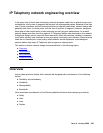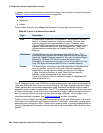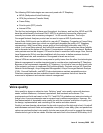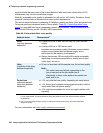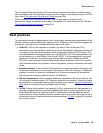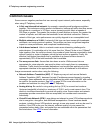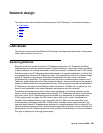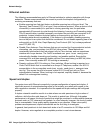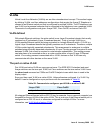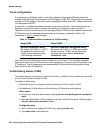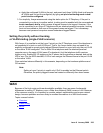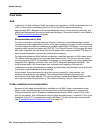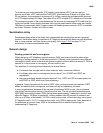
IP Telephony network engineering overview
288 Avaya Application Solutions IP Telephony Deployment Guide
Common issues
Some common negative practices that can severely impact network performance, especially
when using IP Telephony, include:
● A flat, non-hierarchical network, for example, cascading small workgroup switches
together. This technique quickly results in bottlenecks, because all traffic must flow across
the uplinks at a maximum of 10 Gbps, versus traversing switch fabric at speeds of
256 Gbps or greater. The greater the number of small switches or layers, the greater the
number of uplinks, and the lower the bandwidth for an individual connection. Under a
network of this type, voice performance can quickly degrade to an unacceptable level.
● Multiple subnets on a VLAN. A network of this type can have issues with broadcasts,
multicasts, and routing protocol updates. This practice can have a significant negative
impact on voice performance, and complicate troubleshooting.
● A hub-based network. Hubs in a network create some interesting challenges for
administrators. It is advisable not to link more than four 10baseT hubs or two 100baseT
hubs together. Also, the collision domain, the number of ports that are connected by hubs
without a switch or router in between, should be kept as low as possible. Finally, the
effective (half-duplex) bandwidth that is available on a shared collision domain is
approximately 35% of the total bandwidth that is available.
● Too many access lists. Access lists slow down a router. While access lists are
appropriate for voice networks, care must be taken not to apply them to unnecessary
interfaces. Traffic should be modeled beforehand, and access lists applied only to the
appropriate interface in the appropriate direction, not to all interfaces in all directions.
Avaya recommends caution when using the following:
● Network Address Translation (NAT). IP Telephony may not work across Network
Address Translation (NAT), because if private IP addresses are exchanged in signaling
messages, these addresses are not reachable from the public side of the NAT and cannot
be used for the media sessions. See NAT
on page 302 for more information on the
problem and solutions for using NAT with IP Telephony.
● Analog dial-up. Be careful in using analog dial-up (56 K) to connect two locations.
Upstream bandwidth is limited to a maximum of 33.6 K, and in most cases is less. This
results in insufficient bandwidth to provide toll-quality voice. Some codecs and network
parameters provide connections that are acceptable, but consider each connection
individually.
● Virtual Private Network (VPN). Large delays are inherent in some VPN software products
due to encryption, decryption, and additional encapsulation. Some hardware-based
products, including Avaya VPN products, encrypt at near wire speed, and can be used. In
addition, if the VPN is run over the Internet, sufficient quality for voice cannot be
guaranteed unless delay, jitter, and packet loss are contained within the parameters that
are listed above. See VPN
for more information.






